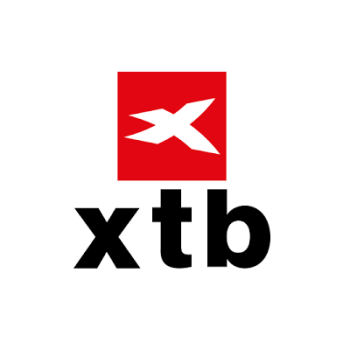How to create a long-term passive investment portfolio
February 28, 2024, 18:30 PM | The content is supplied by TradingBeasts Media Partner XTB
In the dynamic landscape of personal finance, the pursuit of long-term growth is a journey marked by strategic choices and informed decisions. Rooted in the principles of simplicity, diversification, and discipline, this approach is designed to weather market fluctuations while steadily accumulating wealth. At its core, creating a long-term passive investment portfolio is not just about picking the right stocks or timing the market; it's about crafting a well-balanced strategy that aligns with your goals and risk tolerance while harnessing the power of compounding over time. In this article, we'll delve into the intricacies of constructing and managing a passive investment portfolio, exploring key principles, strategies, and best practices to help you navigate the journey towards financial independence and long-term prosperity.
1. Establish Your Investment Goals and Risk Tolerance:
- Before diving into building your portfolio, it's crucial to understand your financial objectives and risk tolerance. Ask yourself questions like:
- What are your investment goals (retirement, education, wealth accumulation)?
- What is your investment time horizon?
- How comfortable are you with market fluctuations and potential losses?
2. Determine Asset Allocation:
Asset allocation refers to the division of your investment portfolio among different asset classes such as stocks,bonds, and cash equivalents. The right allocation depends on your goals and risk tolerance.
Stocks represent ownership in companies and offer potentially higher returns but with greater volatility. Bonds represent loans to governments or corporations and offer lower risk and potential returns. Cash equivalents include money market accounts and short-term bonds, providing stability and liquidity (easy access to funds).
Of course there's no one-size-fits-all allocation. A common approach is a target asset allocation, where you choose a specific percentage for each asset class based on your risk tolerance and goals.
3. Choose Low-Cost, Broadly Diversified Funds:
Passive investing involves using index funds or exchange-traded funds (ETFs) that track major market indices like the S&P 500 or the total stock market. These funds offer broad diversification and typically have lower fees compared to actively managed funds. Look for funds with low expense ratios to minimise costs eating into your returns. Exchange-traded funds (ETFs) are similar to index funds but trade like stocks on exchanges. They offer lower fees and more flexibility compared to some actively managed funds.
XTB offers Investment Plans where investors can create personalised long-term, low-risk portfolios based on over 350+ ETFs.
Investors can create their portfolios with as little as £15, choosing ETFs that differ in rate of return, rating and composition. The company has recently introduced a new autoinvest feature where clients can choose from the funds in their XTB account or opt for a bank transfer to regularly top up their individual portfolios. Recurring payments provide adaptability to changing needs and investment goals.
What is crucial for investors to know is the fact you don't have to calculate anything, you just set a percentage you would like to be invested in each ETF and XTB takes care of everything else. You can open and close your Plans at any time giving you the ultimate flexibility. It is also worth noting that setting up and running Investment Plans is completely free of charge. You get to decide exactly how long your investments will last.
4. Allocate Across Different Asset Classes:
Diversification is key to managing risk in your portfolio. Allocate your investments across various asset classes, including:
- Stocks: Domestic and international stocks provide growth potential but also come with higher volatility. Investing in Stocks & ETFs at XTB is zero commission up to 100,000 Euro equivalent turnover. Other fees may apply.*
- Exchange-traded funds (ETFs): Similar to index funds but trade like stocks on exchanges. They offer lower fees and more flexibility compared to some actively managed funds.
- Bonds: Bonds offer income and stability. Consider government, corporate, and municipal bonds.
- Real Estate Investment Trusts (REITs): REITs provide exposure to real estate without the hassle of owning physical properties.
- Commodities: Including commodities like gold or energy can add diversification and hedge against inflation.
5. Rebalance Regularly:
Over time, the value of different assets in your portfolio will change, causing your asset allocation to drift from your target. Regularly rebalance your portfolio by selling assets that have become overweight and buying those that are underweight. This maintains your desired asset allocation and helps manage risk. With Investment Plans as the value of your Investment Plan evolves over time, you'll get alerted to readjust the plan based on your initial fund allocation preferences.
6. Consider Tax Efficiency:
Invest in tax-efficient accounts to minimise the impact of taxes on your investment returns. Asset location is also crucial—place tax-inefficient investments like bonds in tax-advantaged accounts and tax-efficient investments like stocks in taxable accounts.
7. Stay Disciplined and Ignore Market Noise:
One of the challenges of passive investing is resisting the urge to react to short-term market fluctuations or news events. Stick to your long-term investment plan, avoid emotional decisions, and stay disciplined during market downturns. Remember, successful investing is about time in the market, not timing the market and staying constantly educated.
By following these steps and staying committed to a long-term investment strategy, you can build a passive investment portfolio that has the potential to grow steadily over time and help you achieve your financial goals. Remember, consistency and patience are key to success in passive investing.
78% of retail investor accounts lose money when trading CFDs with this provider.
Your capital is at risk. The value of your investments may go up or down.
*For monthly turnover equivalent up to 100,000 EUR. Transactions above this limit will be charged a commission of 0.2% (minimum 10 GBP).
Regulated Brokers
The table below contains links to 3rd party websites of our top partners from whom we receive compensation at no additional cost to you.












